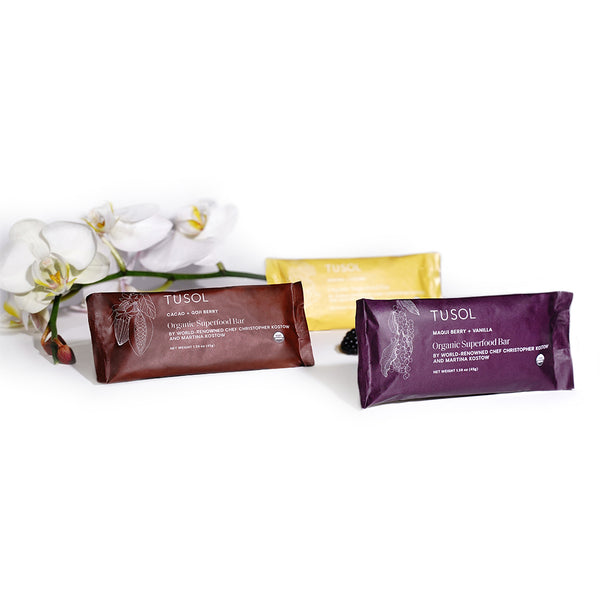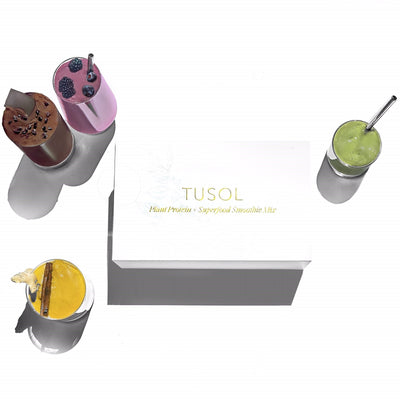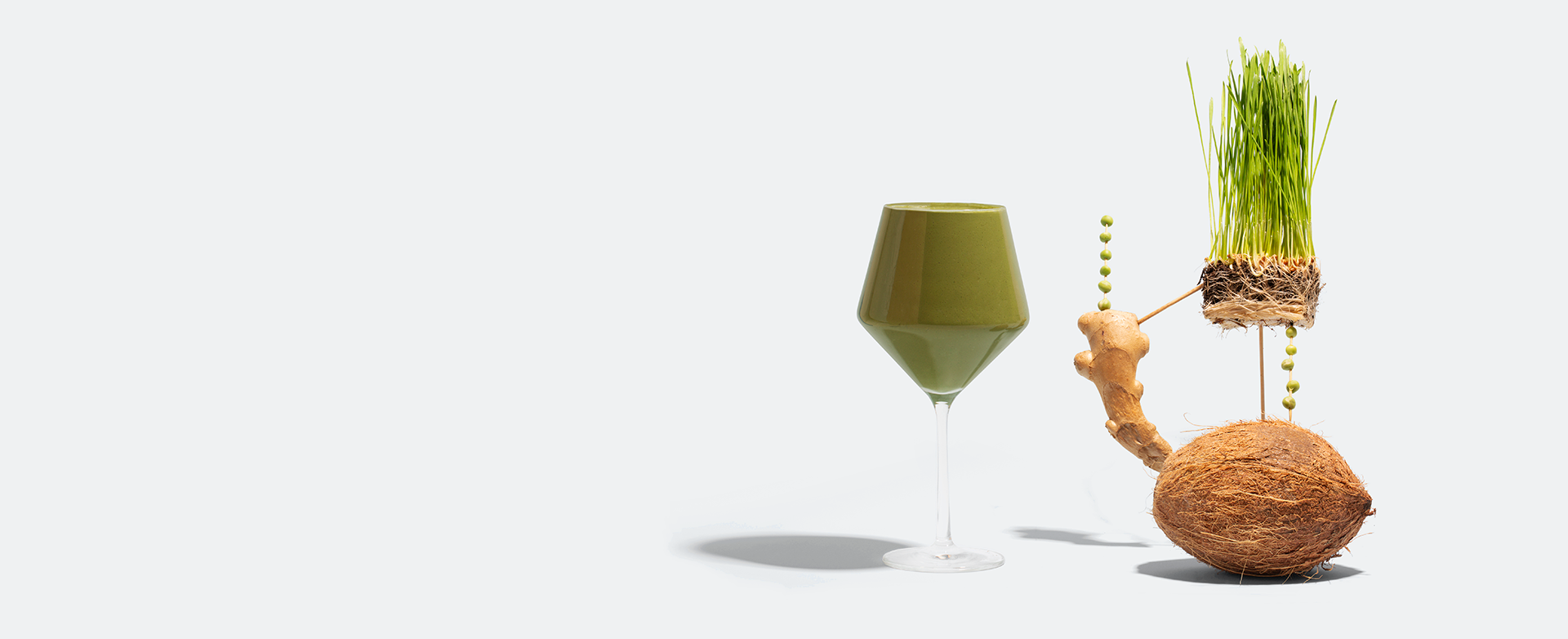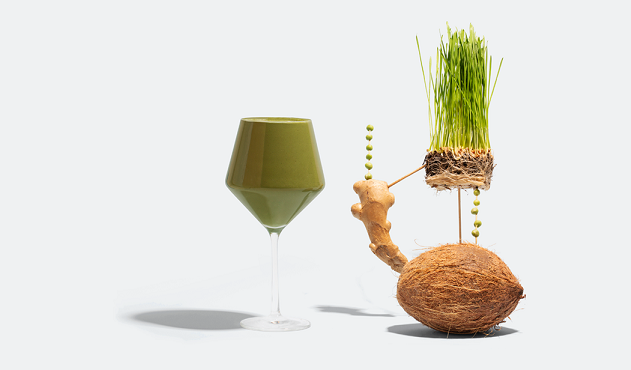Research
Lion’s Mane
University of Malaya, Kuala Lumpur, Malaysia.
Neurotrophic factors are important in promoting the growth and differentiation of neurons. Nerve growth factor (NGF) is essential for the maintenance of the basal forebrain cholinergic system. Hericenones and erinacines isolated from the medicinal mushroom Hericium erinaceus can induce NGF synthesis in nerve cells. In this study, we evaluated the synergistic interaction between H. erinaceus aqueous extract and exogenous NGF on the neurite outgrowth stimulation of neuroblastoma-glioma cell NG108-15. The neuroprotective effect of the mushroom extract toward oxidative stress was also studied. Aqueous extract of H. erinaceus was shown to be non-cytotoxic to human lung fibroblast MRC-5 and NG108-15 cells. The combination of 10 ng/mL NGF with 1 μg/mL mushroom extract yielded the highest percentage increase of 60.6% neurite outgrowth. The extract contained neuroactive compounds that induced the secretion of extracellular NGF in NG108-15 cells, thereby promoting neurite outgrowth activity. However, the H. erinaceus extract failed to protect NG108-15 cells subjected to oxidative stress when applied in pre-treatment and co-treatment modes. In conclusion, the aqueous extract of H. erinaceus contained neuroactive compounds which induced NGF-synthesis and promoted neurite outgrowth in NG108-15 cells. The extract also enhanced the neurite outgrowth stimulation activity of NGF when applied in combination. The aqueous preparation of H. erinaceus had neurotrophic but not neuroprotective activities.
https://www.ncbi.nlm.nih.gov/pubmed/24266378
Reishi
Department of Neurology, Shengjing Hospital, China Medical University, Shenyang, China
Supported by the Natural Science Foundation
In conclusion, a variety of Ganoderma lucidum extracts have definite anti-aging properties and they exert their anti-aging effects mainly through anti-oxidation, immunomodulation and anti-neurodegeneration. G. lucidum has been viewed as an elixir since Chinese ancient times.
https://www.ncbi.nlm.nih.gov/pmc/articles/PMC5758346/
Probiotics
Dundee University Gut Group, Division of Pathology and Neuroscience, Ninewells Hospital and Medical School, Dundee, UK
Three prebiotics, oligofructose, galacto-oligosaccharides and lactulose, clearly alter the balance of the large bowel microbiota by increasing bifidobacteria and Lactobacillus numbers. These carbohydrates are fermented and give rise to short-chain fatty acid and intestinal gas; however, effects on bowel habit are relatively small. Randomized-controlled trials of their effect in a clinical context are few, although animal studies show anti-inflammatory effects in inflammatory bowel disease, while calcium absorption is increased.
https://www.ncbi.nlm.nih.gov/pubmed/19459727
Chaga Mushroom
State Key Laboratory of Quality Research in Chinese Medicine, Institute of Chinese Medical Sciences, University of Macau, Macau, China
Chaga mushroom is another promising candidate in the field of medicinal mushrooms. The major constituents are betulinic acid derivatives and melano-glucan complexes, and chaga have traditionally been boiled to make a tea, which is drunk to treat a range of conditions, including cancers, viral and bacterial infections, and gastro-intestinal disorders [23,24]. Inonotus obliquus belongs to higher basidiomycetes of chaga medicinal mushrooms. Inonotus obliquus presented protective effects against the oxidative stress in the liver induced by tert-butyl hydroperoxide in primary-cultured rat hepatocytes. The above said property may be due to its ability to scavenge the free radicals and thereby it inhibits the leakage of liver marker enzymes as a result of liver damage [25]. The high total phenolic contents may be the reason for its strong antioxidant activity. Like several other mushrooms, I. obliquus also possesses anticancer activity. The ergosterol peroxide from I. obliquus exhibits anti-cancer activity by down-regulation of the β-catenin pathway in colorectal cancer and it shows that it down-regulated β-catenin signaling, which exerted anti-proliferative and pro-apoptotic activities in colorectal cancer (CRC) cells. This proves that I. obliquus can be developed as promising medicine to treat colon cancer [26]. With context to this; another study shows that ethanolic extract of Innotus obliquus induces G1 cell cycle arrest in HT-29 human colon cancer cells [27]. The biological activity of the Inonotus obliquus is mainly due to the presence of several polysaccharides, the polysaccharides of Inonotus obliquus mainly constitutes the following sugars: rhamnose, arabinose, xylose, mannose, glucose, and galactose. An interesting study finds that Inonotus obliquus polysaccharide (IOP) contains polysaccharide content of 98.6%, and Man, Rha, Glu, Gal, Xyl, and Ara in a ratio of 9.8:13.6:29.1:20.5:21.6:5.4 as monosaccharide. The study reveals that IOP induce changes in the gut microbiota and increased the Bacteroidetes at the phylum level, and brings the changes towards a healthy bacterial profile. The experiment was carried with three different doses of IOP 0.1, 0.2, and 0.4 g/kg/day. The result of the study states that the predominant phylum was Bacteroidetes, normal control (NC) shows 65.05%, 47.47% in model control (MC) group. The composition of Bacteroidetes was increased about 4.55%, 9.56%, 17.48%, and 20.81% in IOP-L, IOP-M, IOP-H, and Qingyilidan granule treated (PC) groups, respectively. The PC group (Qingyilidan granule) is the standard compared with the three different doses of IOP [28].
https://www.ncbi.nlm.nih.gov/pmc/articles/PMC5618583/
Department of Neurosurgery, The Affiliated Hospital of Beihua University, Jilin, China.
The I. obliquus extract can inhibit the proliferation of tumor cells. This inhibition function is closely related to the downregulation of Bcl-2 and the upregulation of caspase-3.
https://www.ncbi.nlm.nih.gov/pubmed/24940902
Maqui Berry
Study funded by National Commission for Scientific and Technological Research (CONICYT, Chile)
Maqui berry is the richest known natural source of delphinidins. An in vitro assay of this purified molecule showed an increase in the generation of nitrogen oxide (NO) in endothelial cells, decreased platelet adhesion, and anti-inflammatory effects. Additionally, it has been reported that delphinidins can counteract aging of the skin and inhibit osteoporosis.
https://www.ncbi.nlm.nih.gov/pmc/articles/PMC6722795/#B116-foods-08-00289
The antioxidant and anti-inflammatory effects of water extracts of maqui berry were tested in a mouse dermatitis model showing an increase of interferon-gamma (IFN-γ) levels and a decrease of interleukin-4 (IL-4), suggesting its potential use for atopic dermatitis treatment.
https://www.ncbi.nlm.nih.gov/pmc/articles/PMC6722795/#B116-foods-08-00289
Chaga Mushroom
University Tokyo, Japan
We showed that the continuous intake of the (Chaga) I. obliquus extract can potentially suppress cancer development through the maintenance of the body temperature. In addition, middle-aged mice drinking the (Chaga) I. obliquus extract exhibited body weight loss. Our findings suggest that the aqueous extract of (Chaga) I. obliquus could be used as a natural product for cancer suppression and general health care.
Key Findings:
The extract of I. obliquus caused significant tumor suppressive effects in both models. Thus, in tumor-bearing mice, 60% tumor reduction was observed, while in metastatic mice, the number of nodules decreased by 25% compared to the control group. Moreover, I. obliquus extract-treated mice demonstrated the increase in tumor agglomeration and inhibition of vascularization. Interestingly, I. obliquus intake decreased body weight in middle-aged mice and increased body temperature in response to light-dark switching in mature adult mice. Furthermore, I. obliquus prevented temperature drop in mice after tumor implantation
https://www.ncbi.nlm.nih.gov/pmc/articles/PMC4946216/
Department of Medical Nutrition, Kyunghee University, South Korea
Chaga mushroom treatment affords cellular protection against endogenous DNA damage produced by H2O2 (Hydrogen peroxide). Chaga mushroom extract inhibits oxidative DNA damage in human lymphocytes.
https://www.ncbi.nlm.nih.gov/pubmed/15630179
Curcumin
University of Southern California study on amyloid plaque and curcumin
Due to various effects of curcumin, such as decreased Beta-amyloid plaques, delayed degradation of neurons, metal-chelation, anti-inflammatory, antioxidant and decreased microglia formation, the overall memory in patients with AD has improved.
https://www.ncbi.nlm.nih.gov/pmc/articles/PMC2781139/
https://www.sciencedirect.com/science/article/abs/pii/S0300483X09005848
Published in Brain Research in 2006
Curcumin alleviates stress-induced decreases in Brain Derived Neutropic Factor and pCREB/CREB were also blocked by chronic curcumin administration. These results provide compelling evidence that the behavioral effects of curcumin in chronically stressed animals, and by extension humans, may be related to their modulating effects on the HPA axis and neurotrophin factor expressions
https://www.semanticscholar.org/paper/Curcumin-reverses-the-effects-of-chronic-stress-on-Xu-Ku/b26fd0a78f0ac8ebe6d084f83c4f93f9192f3f34
Ginger
Published in Herbal Medicine: Biomolecular and Clinical Aspects. 2nd edition.
The effectiveness of ginger in preventing or suppressing cancer growth has been examined in a variety of cancer types, including lymphoma, hepatoma, colorectal cancer, breast cancer, skin cancer, liver cancer, and bladder cancer. The mechanisms proposed to explain the anticancer activities of ginger and its components include antioxidant activity and the ability to induce apoptosis, decrease proliferation, cause cell-cycle arrest, and suppress activator protein 1 (AP-1) and NF-κB/COX-2 signaling pathways (Figure 7.3).
https://www.ncbi.nlm.nih.gov/books/NBK92775/
Maca
Palacki Univeristy, Czech Republic
Maca increased significantly the activity of SOD (superoxide dismutase) in the liver, the GPX (glutathione peroxidase) in the blood, and the level of GSH (glutathione) in the liver.
https://www.ncbi.nlm.nih.gov/pubmed/17333395
Wheatgrass
Published on Institute of Food Science and Technology
Wheatgrass powder (WP) showed higher radical scavenging capacity, ash and chlorophyll content and lower protein content as compared to pulse powder (PP). Wheatgrass (WJP) juice powder had significantly higher K and Mg content as compared to pulse juice powder (PJP). Powders with relatively higher K and Mg content had higher radical scavenging capacity and chlorophyll content.
Barley Grass
These results support that barley grass may be one of the best functional foods for preventive chronic diseases and the best raw material of modern diet structure in promoting the development of large health industry and further reveal that GABA, flavonoids, SOD, K-Ca, vitamins, and tryptophan mechanism of barley grass have preventive and therapeutic role for chronic diseases. This paper can be used as a scientific evidence for developing functional foods and novel drugs for barley grass for preventive chronic diseases.
https://www.ncbi.nlm.nih.gov/pmc/articles/PMC5904770/
Barley Grass is very effective in the treatment of ulcerative colitis, pancreatitis, and disorders of the gastrointestinal tract. A germinated barley foodstuff is helpful to reduce ulcerative colitis and improves symptoms by promoting the probiotics growth. Selenium-enriched barley grass has significant ameliorative effect on ethanol-induced gastric ulcer in mice
https://www.ncbi.nlm.nih.gov/pmc/articles/PMC5904770/
Depression not only is one of the most widely associated mental disorders in the world, but also has been associated with the risk to develop cancer, dementia, obesity, diabetes, blood pressure, atherosclerosis, epilepsy, and stroke. There is an important role for GABAergic, glutamatergic, and cholinergic receptors in the pathomechanism of depression. The reduce epilepsy and preventive dementia as well as antidepressant of the young green barley leaf are regulated by inhibiting the hippocampus levels increased of nerve growth factor. The vitamins and minerals in BG can prevent the stress-related psychiatric disorders of depression.
https://www.ncbi.nlm.nih.gov/pmc/articles/PMC5904770/
Psyllium Husk
Immunobiology Research Program and Department of Bacteriology and Immunology, Faculty of Medicine, University of Helsinki.
Psyllium is a widely used treatment for constipation. It traps water in the intestine increasing stool water, easing defaecation and altering the colonic environment. We aimed to assess the impact of psyllium on faecal microbiota, whose key role in gut physiology is being increasingly recognised. We performed two randomised, placebo-controlled, double-blinded trials comparing 7 days of psyllium with a placebo (maltodextrin) in 8 healthy volunteers and 16 constipated patients respectively. We measured the patients’ gastrointestnal (GI) transit, faecal water content, short-chain fatty acid (SCFA) and the stool microbiota composition. While psyllium supplement had a small but significant effect on the microbial composition of healthy adults (increasing Veillonella and decreasing Subdoligranulum), in constipated subjects there were greater effects on the microbial composition (increased Lachnospira, Faecalibacterium, Phascolarctobacterium, Veillonella and Sutterella and decreased uncultured Coriobacteria and Christensenella) and alterations in the levels of acetate and propionate. We found several taxa to be associated with altered GI transit, SCFAs and faecal water content in these patients. Significant increases in three genera known to produce butyrate, Lachnospira, Roseburia and Faecalibacterium, correlated with increased faecal water. In summary, psyllium supplementation increased stool water and this was associated with significant changes in microbiota, most marked in constipated patients.
https://www.ncbi.nlm.nih.gov/pmc/articles/PMC6358997/
The physical effects of fiber in the small intestine drive metabolic health effects (e.g., cholesterol lowering, improved glycemic control), and efficacy is a function of the viscosity of gel‐forming fibers (e.g., psyllium, β‐glucan). In the large intestine, fiber can provide a laxative effect if (a) it resists fermentation to remain intact throughout the large intestine, and (b) it increases percentage of water content to soften/bulk stool (e.g., wheat bran and psyllium).
https://www.ncbi.nlm.nih.gov/pmc/articles/PMC5413815/
Ashwagandha
Yale School of Public Health, New Haven, CT
Results: Sixty-two abstracts were screened; five human trials met inclusion criteria. Three studies compared several dosage levels of WS extract with placebos using versions of the Hamilton Anxiety Scale, with two demonstrating significant benefit of WS versus placebo, and the third demonstrating beneficial effects that approached but did not achieve significance (p=0.05). A fourth study compared naturopathic care with WS versus psychotherapy by using Beck Anxiety Inventory (BAI) scores as an outcome; BAI scores decreased by 56.5% in the WS group and decreased 30.5% for psychotherapy (p<0.0001). A fifth study measured changes in Perceived Stress Scale (PSS) scores in WS group versus placebo; there was a 44.0% reduction in PSS scores in the WS group and a 5.5% reduction in the placebo group (p<0.0001). All studies exhibited unclear or high risk of bias, and heterogenous design and reporting prevented the possibility of meta-analysis.
Conclusions: All five studies concluded that WS intervention resulted in greater score improvements (significantly in most cases) than placebo in outcomes on anxiety or stress scales. Current evidence should be received with caution because of an assortment of study methods and cases of potential bias.













